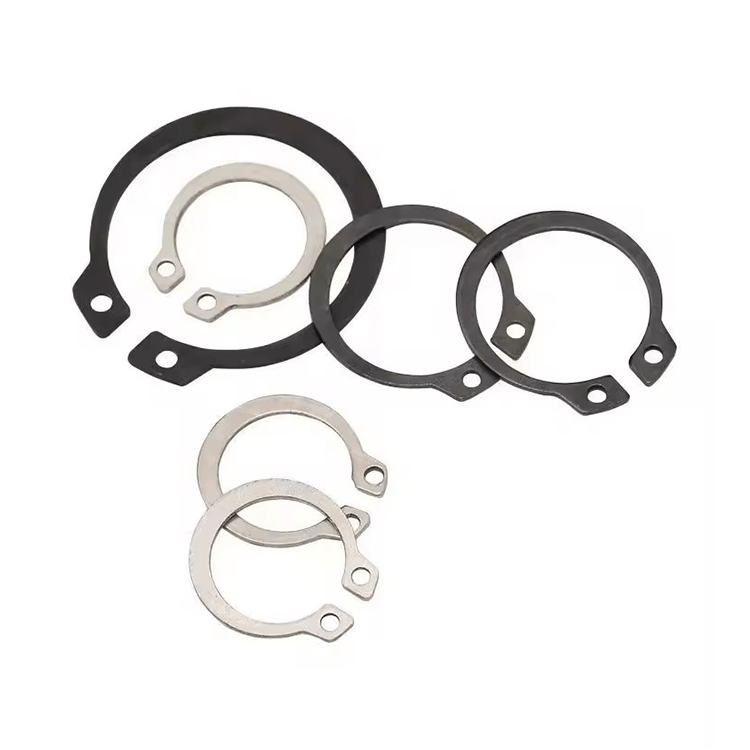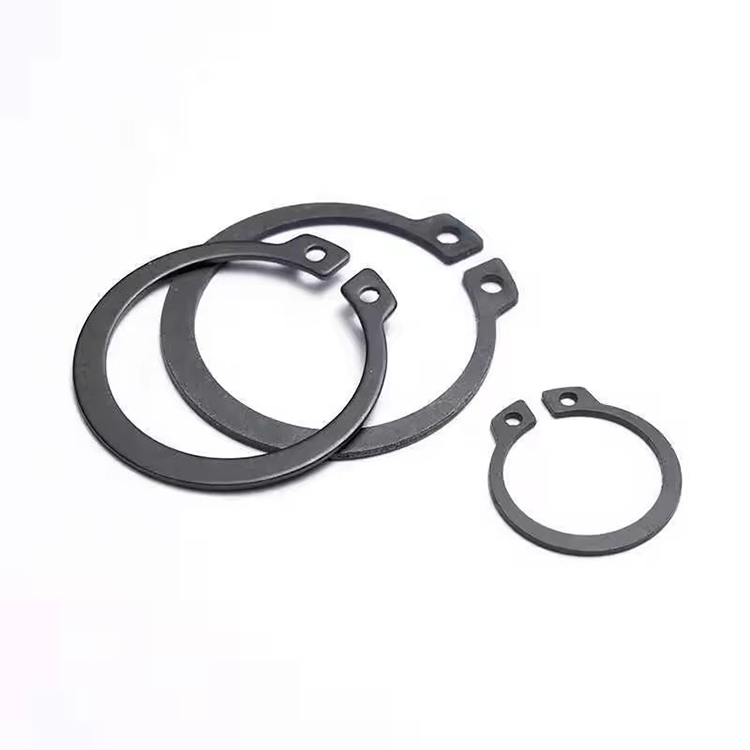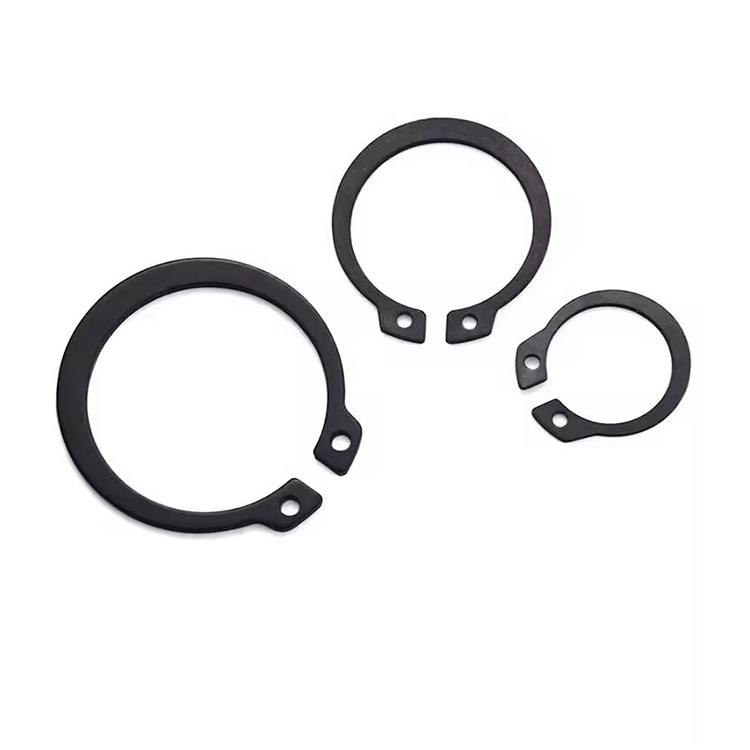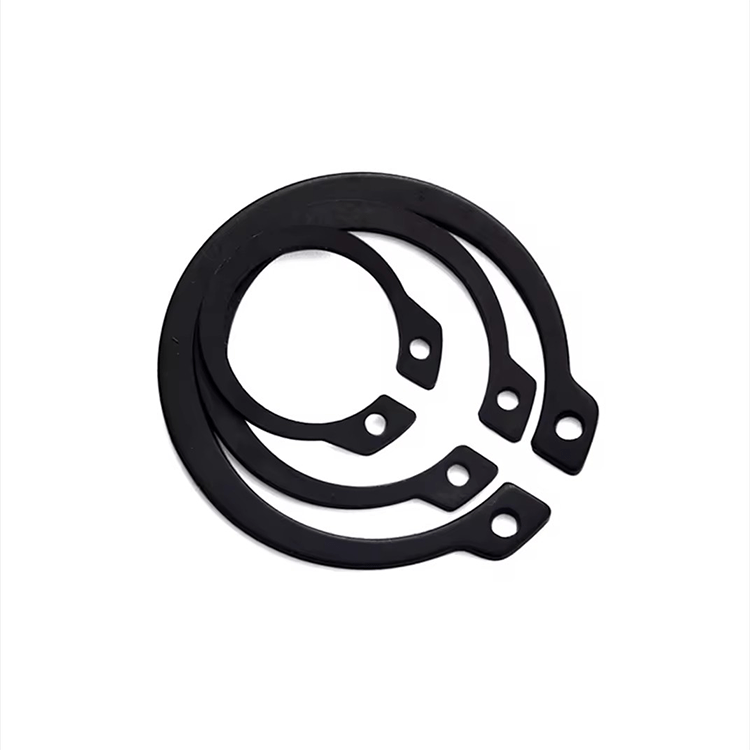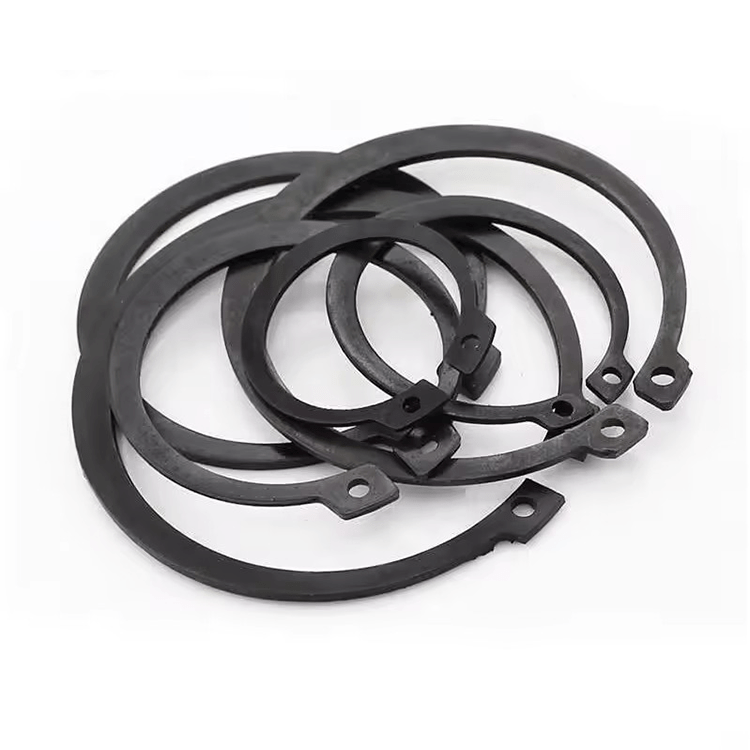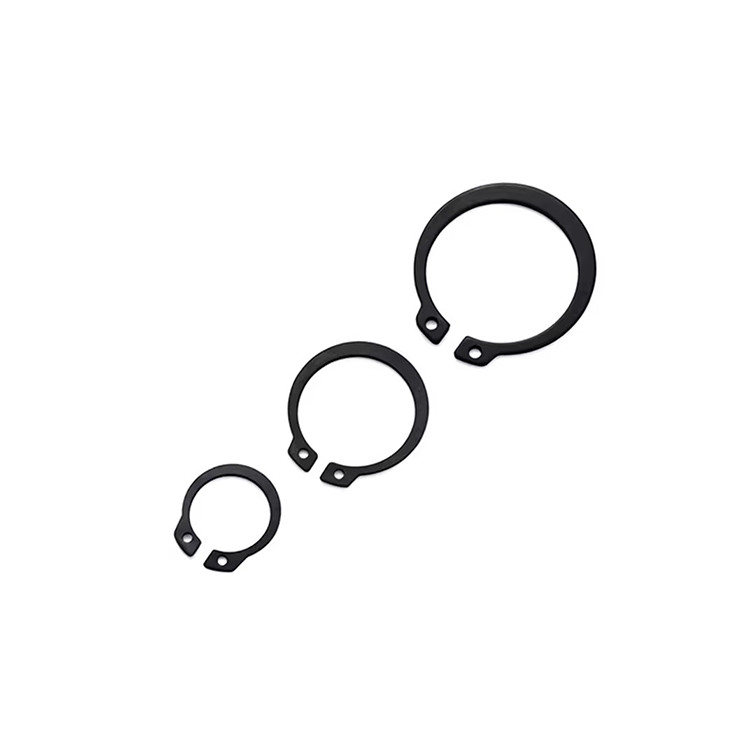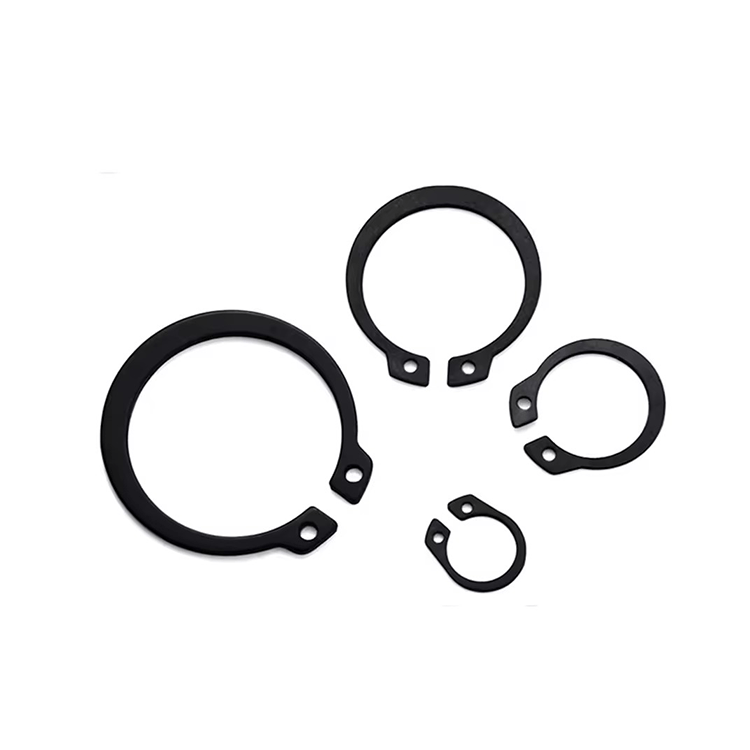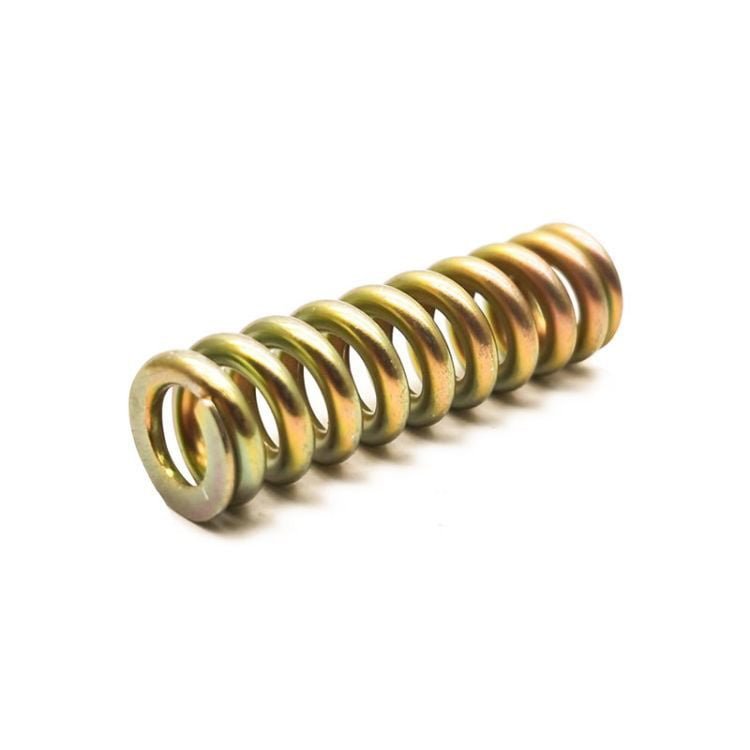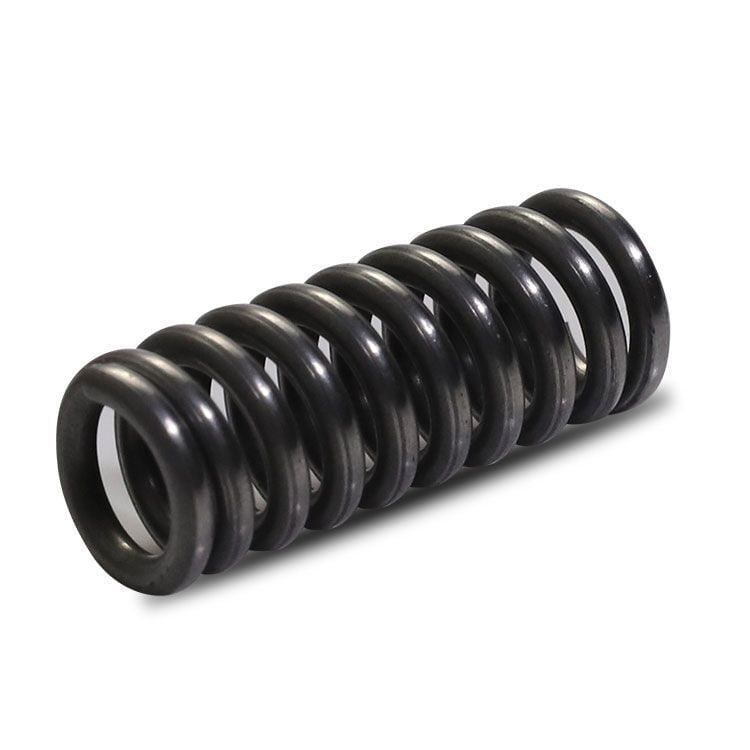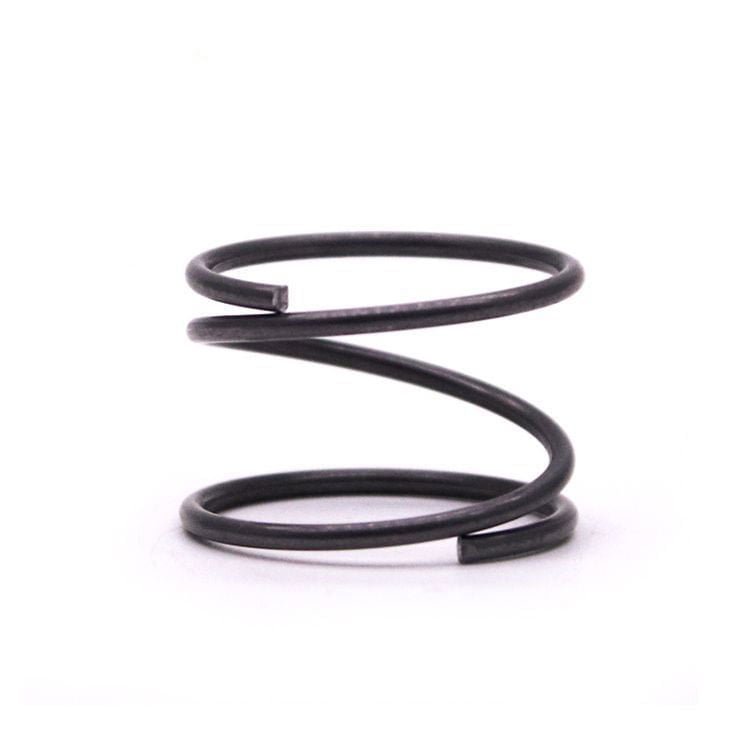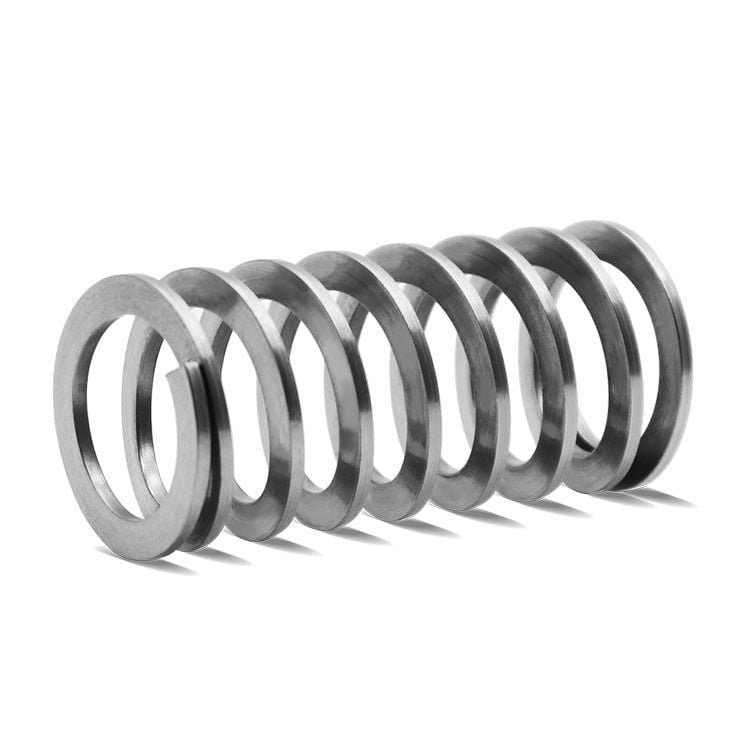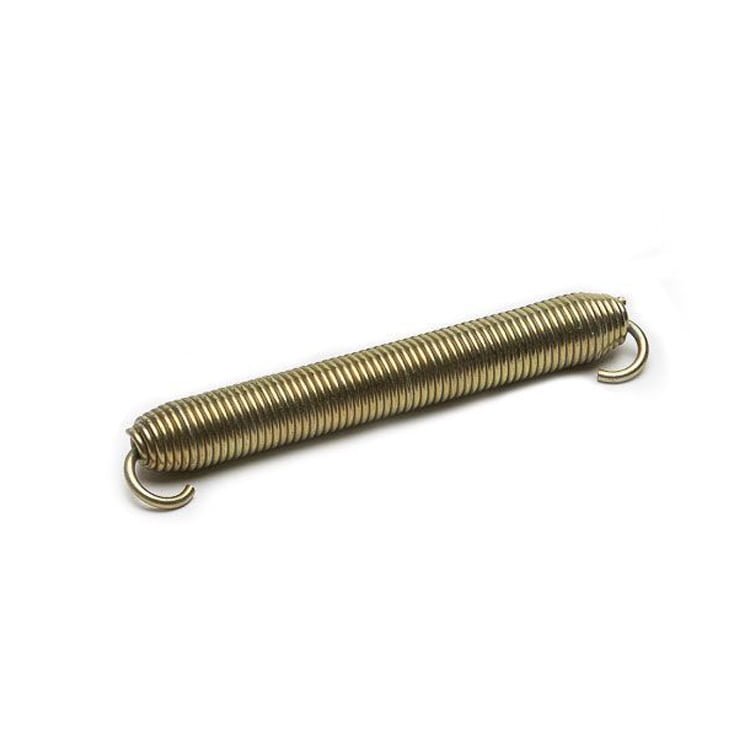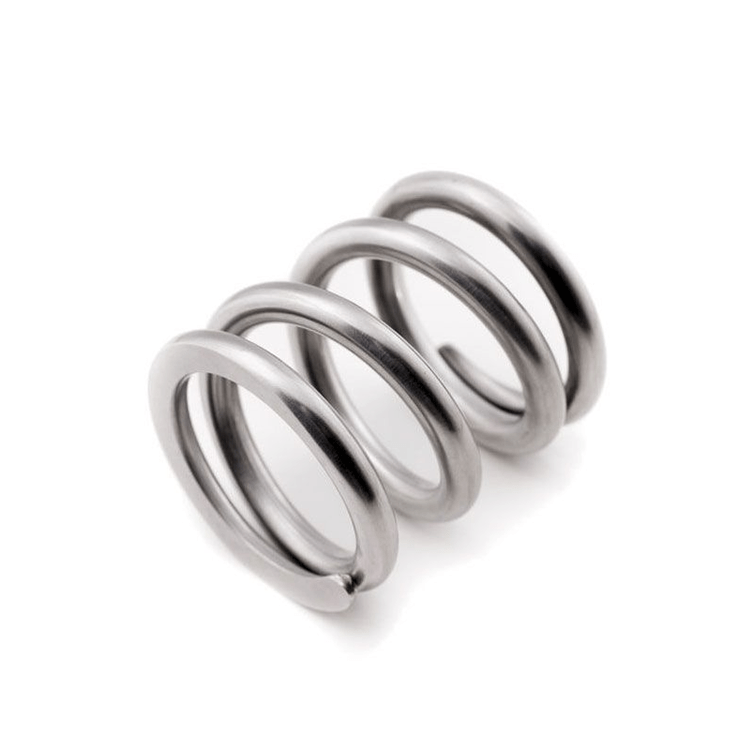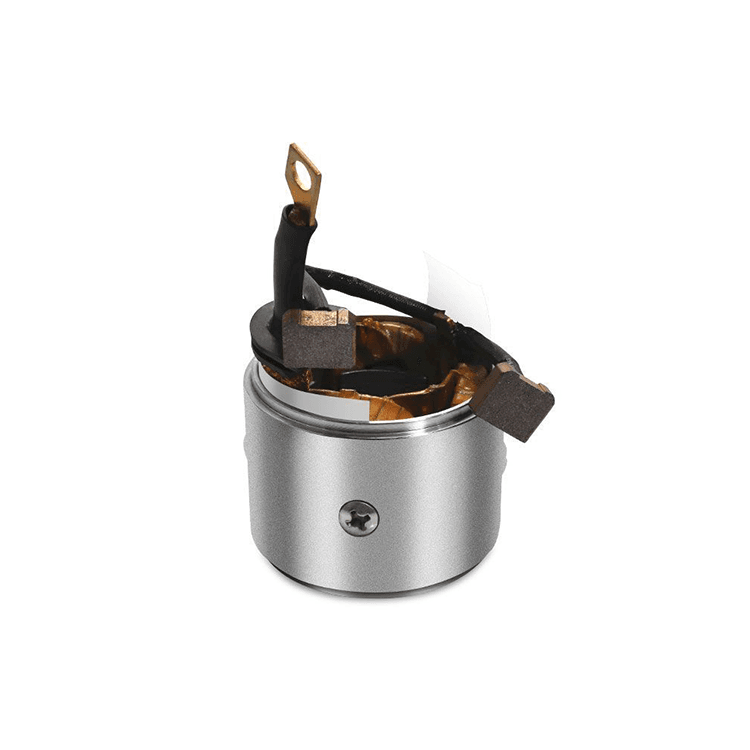External axial retaining ring
The External axial retaining ring is a fixed part specially designed for the shaft, whose main function is to limit the movement of the parts in the axial direction. The main function of the External axial retaining ring is to prevent the axial movement of parts on the shaft and ensure the stability and reliability of the mechanical system. By providing stable axial support and limiting action, it reduces the relative movement between parts, reduces wear and noise, and extends the service life of the equipment.
Type: According to the different structural characteristics and installation methods, the fastenal snap ring can be divided into a variety of types, such as open baffle, cut baffle, elastic baffle and so on. Each type has its own specific application scenarios and advantages and disadvantages.
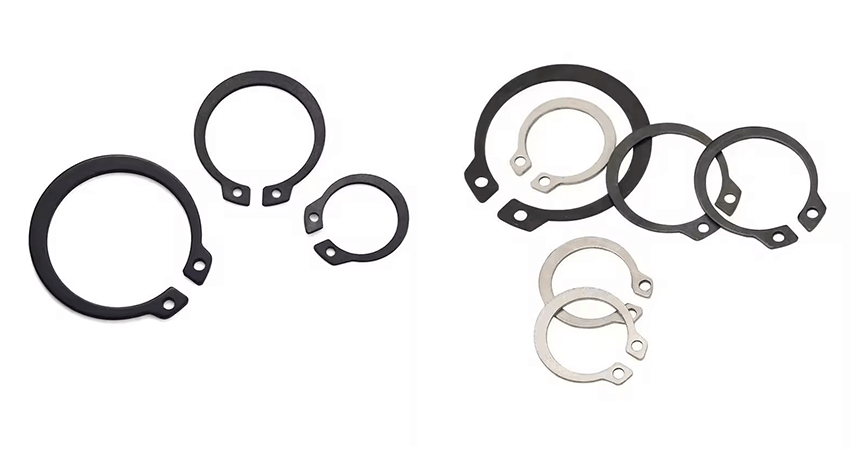
Structure: The External axial retaining ring is generally composed of a ring body and a mounting part. The ring body provides the main axial support and limiting function, while the mounting part is used to secure the retaining ring to the shaft. The mounting part may include a structure such as a slot, thread, hole, etc., for fitting with the corresponding component on the shaft.
Installation and use:
- Installation: The installation of the External axial retaining ring usually requires the use of special tools to operate, in the installation process, it is necessary to ensure that the size, shape and installation position of the stop ring are consistent with the design requirements on the shaft to avoid failure and damage caused by improper installation.
- Use: When using the External axial retaining ring, pay attention to keep it clean and dry to avoid corrosion and pollution, at the same time, check the status and performance of the retainer regularly, and timely discover and deal with potential problems and hidden dangers.
Application of External axial retaining ring:
- Automotive industry: Stop rings are widely used in various applications in the automotive industry, such as fixing wheel bearings, transmission components and axle components.
- Aerospace industry: In the aerospace sector, accuracy and reliability are crucial, and the circlip is used to fix key components such as bearings, fasteners and drive systems.
- Manufacturing and machinery: Retaining rings play a vital role in the manufacturing machinery industry, fixing parts in heavy machinery, conveying systems and hydraulic cylinders.
- Medical devices: In the medical field where accuracy and safety are crucial, circlip is used in medical devices such as surgical instruments to ensure their normal function and service life.
- Consumer electronics: Even in consumer electronics, clasp rings are used in products such as smartphones and cameras to hold lenses, buttons and other key components.
Proper operation and safety:
- When handling the external retainer, especially during the installation and disassembly process, caution is required, and safety measures must be taken to prevent injury and damage to the stop ring.
- Applying proper lubrication during installation can reduce friction and make it easier to fix or remove the retainer, thereby extending its service life.
- Regular maintenance and inspection of the circlip is essential to detect wear, corrosion or damage that may affect its performance.
Although small in size, the importance of the drive shaft retainer in the field of mechanical engineering cannot be overstated, these humble components provide the necessary retention and stability in countless applications from automotive to aerospace to manufacturing.
In short, as an important part of the mechanical system, the external axial retaining ring plays an important role in limiting the axial movement of the parts and ensuring the stability and reliability of the system. By choosing the right material, type and installation method, it can give full play to its superior performance and characteristics, and provide a strong guarantee for the normal operation of mechanical equipment.
